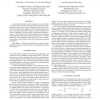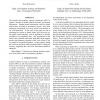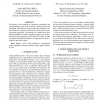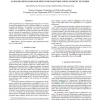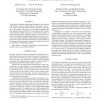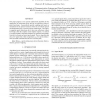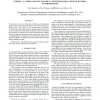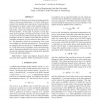ICASSP
2009
IEEE
14 years 6 months ago
2009
IEEE
A conventional automatic speech recognizer does not perform well in the presence of noise, while human listeners are able to segregate and recognize speech in noisy conditions. We...
ICASSP
2009
IEEE
14 years 6 months ago
2009
IEEE
The popular mel-frequency cepstral coefficients (MFCCs) capture a mixture of speaker-related, phonemic and channel information. Speaker-related information could be further broke...
ICASSP
2009
IEEE
14 years 6 months ago
2009
IEEE
ICASSP
2009
IEEE
14 years 6 months ago
2009
IEEE
This paper describes a way of designing modulation filter by datadriven analysis which improves the performance of automatic speech recognition systems that operate in real envir...
ICASSP
2009
IEEE
14 years 6 months ago
2009
IEEE
Audio segmentation is an essential preprocessing step in several audio processing applications with a significant impact e.g. on speech recognition performance. We introduce a no...
ICASSP
2009
IEEE
2009
IEEE
Filter-and-forward distributed beamforming for relay networks in frequency selective fading channels
14 years 6 months ago
A half-duplex distributed beamforming technique for relay networks with frequency selective fading channels is developed. The network relays use the filter-and-forward (FF) strat...
ICASSP
2009
IEEE
14 years 6 months ago
2009
IEEE
This paper proposes a new speech enhancement algorithm for the suppression of background noise and late reverberation without a priori knowledge. A generalized spectral weighting ...
ICASSP
2009
IEEE
14 years 6 months ago
2009
IEEE
We present an overview of the data collection and transcription efforts for the COnversational Speech In Noisy Environments (COSINE) corpus. The corpus is a set of multi-party con...
ICASSP
2009
IEEE
14 years 6 months ago
2009
IEEE
Distributed synchronization is known to occur at several scales in the brain, and has been suggested as playing a key functional role in perceptual grouping. State-of-the-art visu...
ICASSP
2009
IEEE
14 years 6 months ago
2009
IEEE
Least squares (LS) fitting is one of the most fundamental techniques in science and engineering. It is used to estimate parameters from multiple noisy observations. In many probl...
